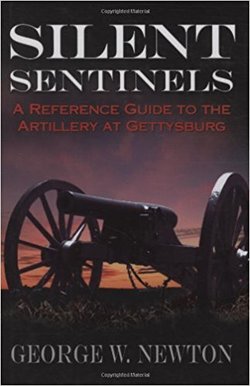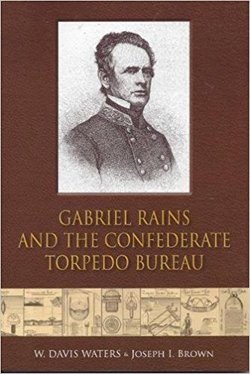
George W. Newton
Savas Beatie, 2017, 288 pp., $22.95
ISBN: 978-1-61121-247-1
Image courtesy of amazon.com
If there’s anything I love about Civil War books, it is the occasional reference work on something which I think is needed. While there are plenty of refence materials out there concerning the Battle of Gettysburg, there was always something which I thought was missing from those texts. Silent Sentinels: A Reference Guide to the Artillery at Gettysburg is a welcome addition to the reference work of Gettysburg. While there has been books on the artillery at Gettysburg, only one other is a reference work mentioning Confederate artillery, this book takes the whole battlefield into consideration.
George W. Newton hails from Baltimore and graduated from McMurry University in Abilene, Texas in 1973. He is a veteran of the United States Air Force and served during the Vietnam War. Newton is retired as an executive of the insurance industry. He is also a Licensed Battlefield Guide at Gettysburg National Military Park.
One of the highlights of this book which I greatly appreciate is that while it is subtitled as a reference guide, Newton also gives a great deal of narrative at the opening of the book, not only on the battle itself, but the nature of artillery. He gives details into the loading and firing of the machines, the makeup of the cannisters and all around gives the reader details into how the cannons worked. He even gives the reader a tour of the battlefield when it comes to the artillery meaning that you can easily bring this book along with you on any trip to Gettysburg. It is in the appendices where the reader will find the organization of artillery given by each state, the makeup of the guns used, and the officers for the grouping. Overall, there is little to say here besides that this book should be used when researching the Battle of Gettysburg and the effect in which the artillery had on the battle. While other works have just told the story, Newton gives us what we were looking for. The book is aided by many photographs and maps of the battle which are always good, but the illustrations of artillery are where this book shines in its descriptions. There are numerous illustrations on how the artillery worked, how they were organized when it company form, and others on how to load and fire depending on the strategies used. Those were some of the more excellent additions to the work in my opinion when it comes to accompanying material for a reference work.
I highly recommend this work to anyone interested in the Battle of Gettysburg. More and more, we are seeing people scratch their heads at the necessity for another book on Gettysburg, but when they are released, I find them to each bring something new and interesting to the study. This book is a welcome addition to the Gettysburg scholarship and will be used not only by students of the war, but by scholars for years to come. Highly Recommended.

 RSS Feed
RSS Feed
